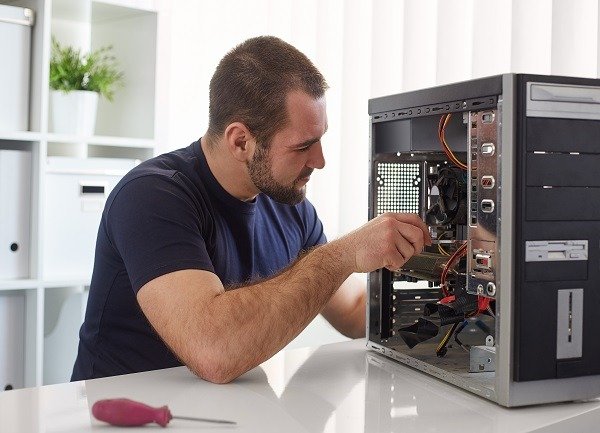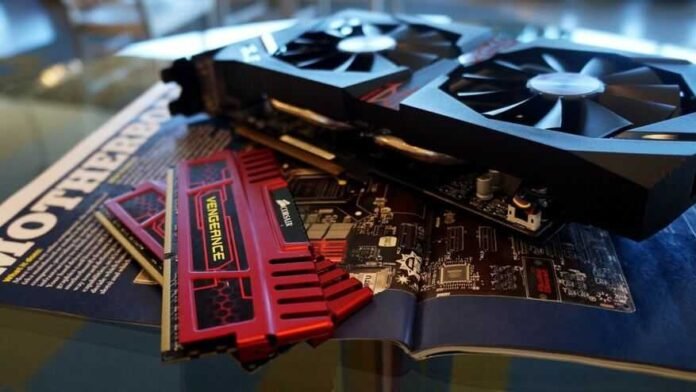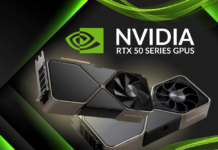The video game you've been waiting for is finally available. You need to carry out photo retouching or video editing as part of your professional activity. You have just turned on your computer and you notice a display problem. For fun practice, professional use or computer troubleshooting, you absolutely must know the characteristics of the graphics card installed on your PC.
And yes ! It would be a shame to notice any incompatibility or to keep a computer unusable because of a lack of knowledge of this information.
Imagine! You have just acquired the latest fashionable video game. You have waited for many months. Enthusiastic at the idea of having fun, you launch it on your machine, the publisher's logo appears then... nothing. Black screen. Full of hope, you reinstall it… Same result. Black screen. You decide to read the game instructions to find out the minimum configuration required to play. Doubt sets in when you read the necessary graphics requirements.
Do you have enough RAM? Do you have an AMD or Nvidia graphics card?…
So you are looking to identify your graphics card. Maybe you just need to update the driver. But nothing to do... You no longer have the box, you haven't kept any instructions. Super frustrating!
A similar mishap can happen again when making video edits, retouching photos or carrying out a repair . Ignoring the model name and driver version makes it difficult to consider visiting the manufacturer's website for an update or even searching for information.
Of course, you try to remember it while browsing the Internet. But nothing to do... These cards have a name that is impossible to remember.
To cheer you up and perhaps save you from having to buy a graphics card or another computer in a hurry, here is a short guide that explains you from A to Z , how to identify your graphics card simply by using the interface of your system Windows or Linux operating system
In just a few minutes, you will be able to act effectively!
Identifying your graphics card under Windows.
Windows operating systems (versions 10, 8.1, 8, 7 and XP combined) accounted for 86.88% of the global operating system
So it is likely that you are using this operating system.
Good news ! The 3 methods described to identify your graphics card work independently of the version of your Windows . A few clicks are enough!
It's always easier on video! Here's how to find out your graphics card in Windows 10.
First method: through the “Device Manager” menu
- Right-click with your mouse on the “Start” button (the “Windows” logo) located at the bottom left of your screen.
- Select “Device Manager” from the menu.
- In the “General” tab, you find the card manufacturer;
- You have the name of the card in the “Details” tab (in the “Value” field);
- In the “Driver” tab, you know the driver version and its date.
- The information sought, click on "Cancel" at the bottom and right of this window to go out and return to the desktop.
Second method: via the “DirectX diagnostic tool” menu.
- Right-click with your mouse on the “Start” button (the “Windows” logo) located at the bottom left of your screen.
- A window appears, select "Run".
- In the “Open” field, type “dxdiag” and click “Ok”.
- The “DIAGNE DIAGNOID TOOL” window opens. Choose the “View” tab. On your left, you will find information from your graphics card in the section entitled "Device". On your right in the "Pilots" section, you have information on the current pilot of your card.
- Click on "Leave" at the bottom and right of the window to go out.
Third method: in 3 clicks.
- On any area of your desktop, right-click.
- Select "screen resolution" from the open menu.
- A window is displayed. Click »Advanced Settings" at the bottom and right.
All information relating to your graphics card becomes accessible in the “Card” tab.
Identifying your graphics card under Linux/Ubuntu

Linux's share on the world market for operating systems seems much smaller than that of the Microsoft giant. Still according to the same study, this weight is evaluated at 2.33 % (source: Netmarketshare - August 2020) ².
Free, stability, performance,… Rich in countless advantages, the Linux system still has many fans.
Fans of this operating system, don't worry. I will also accompany you.
The method for Ubuntu users.
- Go to the top and right on your screen. Click the “Start” button.
- A drop-down menu appears. Select “System Settings”.
- In the window titled “System Settings,” click “Details.”
- A new window appears (named “Details”). Choose the “Summary” or “About” tab (These tabs are located on your left.) depending on the version of your Ubuntu.
From then on, you have access to several pieces of information including a line dedicated to your graphics card.
The method for Linux Mint users
- Click on "Menu" at the bottom and left on your screen.
- Type “Settings” into the search bar.
- Click on "Menu" at the bottom and left on your screen.
- Type “Settings” into the search bar.
A new window appears with useful information about your graphics card.
Identifying your graphics card for troubleshooting (for desktop PC owners)

The previous methods are very effective and accessible. But they are of no use if you have no display on your screen.
Last solution: open your case and search, if possible, directly for information on your graphics card.
The operation is not very complex, but you must be organized and act carefully. It would be regrettable to damage all of your equipment.
Here are some general precautions to take if you want to extract your graphics card:
- Be sure to turn off your computer and unplug all cables before taking action.
- Locate the screws to remove and get the right screwdrivers.
- Sit on a clean, hard and stable surface (preferably a wooden table, avoid the floor with carpets, etc.).
- Before touching your graphics card or any other component, discharge your static electricity. Touch a metal element in contact with the ground (a radiator, etc.). If you do not do this, you risk damaging a component.
- Never force ! You probably have screws to remove and/or a safety device to unlock. If your graphics card doesn't “come on,” there's probably a reason.
You now know how to identify your graphics card. Whatever your operating system, it only takes a few clicks to get key information.
These methods have an advantage: you avoid downloading software intended to obtain this information. “Exit” the risk of viruses, no more wasting time wondering which software to choose based on countless reviews.
Now it's up to you to act. Which method will you choose? I invite you to indicate your feelings in comments. I will be delighted to collect your impressions and discuss with you on this subject.






